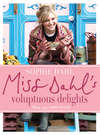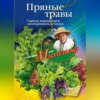Read the book: «Kitchen Hero: Great Food for Less»


Tom Willcocks
CONTENTS
COVER
TITLE PAGE
INTRODUCTION
COOKING ON A SHOESTRING
BUTCHER
PORK
BEEF
POULTRY
LAMB
FISHMONGER
GREENGROCER
GROWING YOUR OWN
COOKING PRACTICES
WASTE NOT, WANT NOT: SAVING LEFTOVERS
SLOW-COOKED MEALS, SOUPS & STEWS
VIETNAMESE POACHED CHICKEN NOODLE SOUP
ANGIE’S SKEHAN FAMILY IRISH STEW
CHINESE FIVE-SPICE PORK BELLY
MUM’S COQ AU VIN BLANC
ROASTED TOMATO & GARLIC SOUP
MOROCCAN SPICED LAMB SHOULDER
CHEESY POTATO TART
BAKED SMOKED HADDOCK & POTATOES
SLOW-COOKED MEATY CHILLI
RIBOLLITA
SIMPLE BOILED HAM HOCK
SLOW-COOKED STEAK & GUINNESS PIE
CHUCK STEAK STROGANOFF
PORCHETTA
DAD’S BRAISED OXTAIL
ROOT VEG & BARLEY SOUP
BEEF SKIRT GOULASH WITH PAPRIKA SPICED DUMPLINGS
UNCLE FERG’S COWBOY FRANKS & BEANS
ROASTED SQUASH, COCONUT & CHILLI SOUP
RED LENTIL SOUP
EVERYDAY EASY SUPPERS
BASIC WHITE WINE & GARLIC STEAMED MUSSELS
CHILLI JAM CHICKEN
SQUASH & SPINACH LENTIL CURRY
CHEESY HAM HOCK SPINACH CREPES
ROAST PUMPKIN & FETA PIE
ONE-PAN-WONDER MEXICAN EGGS
INDIAN CHICKEN & RICE BAKE
ULTIMATE LEFTOVER FRIED RICE
SIZZLING, STICKY, SPICY MINCED PORK WITH RICE
STEAMED ASIAN MACKEREL PARCELS
THAI RED FISH CURRY
FRIDGE LEFTOVERS FRITTATA
CHILLI HONEY-GLAZED PORK CHOPS
CRISPY MUSTARD CHICKEN TRAY BAKE
BAKED POTATO FEAST
TURKEY MEATLOAF WITH A SPICY BEAN SAUCE
CHEAP & HEALTHY
SWEET POTATO CAKES
ROAST BEETROOT, FETA & LENTIL SALAD
SALAD OF SARDINES, ROASTED TOMATO & CRISPY BREADCRUMBS
ROAST SWEET POTATOES WITH SPICED YOGHURT & HERBS
AUBERGINE LASAGNE
STUFFED CABBAGE ROLLS
CHEAT’S HOME-HOT-SMOKED MACKEREL SALAD
ROAST SQUASH & BULGUR WHEAT SALAD
ZINGY TINNED-PULSE SUPER SALAD
MOROCCAN CHICKPEA BURGERS
PEARL BARLEY RISOTTO
SUPERFOOD STIR-FRY
PASTA
SAUSAGE MEAT & CHICKEN LIVER RAGU
CAULIFLOWER & BROCCOLI MAC ’N’ CHEESE
RICH TOMATO ITALIAN MEATBALLS WITH LINGUINE
CREAMY PORK KIDNEY TAGLIATELLE
LEFTOVER CHICKEN CAESAR PASTA
CHILLI TUNA SPAGHETTI
SPICY TOMATO & CHORIZO BAKED GNOCCHI
CREAMY SPINACH GNOCCHI
MUSHY ROAST GARLIC SAUSAGE & SPAGHETTI DINNER
SPICY TOMATO SARDINE PASTA
CREAMY BACON & MUSHROOM SPAGHETTI
SIMPLE SIDES
BOXTY COLCANNON PANCAKES
AVOCADO & GARDEN PEA MINT SALAD
SWEDISH POTATO JANSSON
QUICK & EASY GREENS
SIMPLE ROOT VEG MASH
QUICK BEAN & TOMATO STEW
CHEESY POLENTA
BOULANGÈRE POTATOES
ROAST CABBAGE
NUTTY VEGGIE SATAY NOODLES
HERBY HASSELHOFF POTATOES
BAKED FENNEL
COLCANNON MASH
LEMON CHICKPEA COUSCOUS
DESSERTS
ZESTY ORANGE PUDDINGS
JAM JUMBLE CRUMBLE TART
SOFIE’S RHUBARB PANNA COTTA
SALTED CARAMEL SLICES
LAST-MINUTE DARK CHOCOLATE ESPRESSO CUPS
BIG DO’S TINNED PEACH & BLACKBERRY COBBLER
STICKY TOFFEE BANANA PUDS WITH SALTED CARAMEL SAUCE
CROWD-PLEASING FAMILY TRIFLE
RICE-KRISPIE CARAMEL SWIRL ICE-CREAM CAKE
MINI MOLTEN CHOCOLATE PUDDINGS
MOM’S BREAD & BUTTER ORCHARD PUD
BAKING
SWEDISH KLADDKAKA (GOOEY CHOCOLATE CAKE)
LEMON SLICES
‘MOM WON’T GO TO THE SHOPS’ SCONES
CARROT & CARDAMOM CAKE WITH CINNAMON CREAM CHEESE FROSTING
FROZEN CHOCOLATE CHIP COOKIES
BANANA & OATMEAL MUFFINS
BAKED LEMON & POPPY SEED CHEESECAKE
ISKEROON IRISH SODA BREAD
IRISH BARMBRACK
SWEDISH GINGERBREAD
AUNTIE ANN’S BANANA BREAD WITH RICH FUDGE FROSTING
MOIST MAPLE APPLE TEA CAKE
AUNTIE ERICA’S IRISH OAT FLAPJACKS
ULTIMATE CHOCOLATE FUDGE CAKE WITH WHITE CHOCOLATE FROSTING
BETTY’S AMBROSIA CAKE
LIST OF RECIPES
ACKNOWLEDGEMENTS
ABOUT THE AUTHOR
COPYRIGHT
ABOUT THE PUBLISHER

Sofie Larsson
INTRODUCTION
This book is quite simply about the tricks of thrifty cooking and cheap eating. For my generation in particular, who have grown up in a time where pre-washed salad bags, ready-grated cheese and plastic-wrapped convenience foods have become everyday purchases, thrifty cooking practices can seem like they are from a forgotten world. However, any good cook will know that these are skills that have been used for years, to save money and eat better food. Now is the time to rediscover these great cooking traditions and stop relying on convenience foods, which cost us more and are of inferior quality to dishes that can be made at home. Banish any thoughts of penny-pinching: this is about embracing home cooking at its very best. The real aim here is to make inexpensive ingredients work harder for the money you spend on them, so that ultimately you end up with delicious food that will become part of your everyday diet.
My grandmother is one of the most frugal self-taught cooks you will ever meet: she raised my mom and her six siblings with very little income, but that never stopped her producing wonderfully elegant meals at minimum expense. Her long-engrained home-cooking skills, using inexpensive materials and simple methods, are some of the greatest kitchen tips that have been passed on to me. There is a whole army of grandparents, parents, aunts and uncles up and down the country who possess and use these skills without giving them a second thought. Many of them may have been brought up in households with tight budgets, where watching the pennies was part and parcel of daily life. Some of my favourite recipes and cooking practices in this book are ones I’ve learnt as a result of just chatting on the topic of frugal cooking with those in the know – from my own family to butchers, greengrocers and fishmongers.
This book begins with my frugal cooking guide, in which I’ve included some of the top economical tips and tricks that have been passed on to me: from ways to make your cooking easier and more efficient to general practices that will save you money. There are one or two recipes in the book that will be more expensive to make than others, but the important thing to remember is that these will usually feed a crowd or leave you with leftovers that will keep you going for a few days. My dessert and baking recipes are a good reminder that frugal cooking doesn’t have to mean missing out.
The chapters in this book are filled with recipes that I hope will become part of your cooking routine. They are all simple to follow and don’t require any complicated kitchen equipment, so even those with very few cooking skills can be encouraged to try their hand at them. For those who love to cook on a regular basis, I’d encourage you to try using old-fashioned ingredients, such as offal, or underused cuts of meat. I hope all the recipes will inspire you to try a new approach to cooking – one that is hugely satisfying for your appetite as well as your wallet.

COOKING ON A SHOESTRING
a frugal cooking guide
Cooking frugally is all about what I call ‘clever cooking’, and by that I mean using what you have, saving leftovers to use again, make-ahead preparation, utilising your freezer and choosing inexpensive ingredients that will go far. An understanding of the skills employed by butchers and fishmongers will help you to choose the best ingredients for cheaper prices, so in this section I’ve outlined the main things you should consider when cooking with meat and fish, as well as advice on other ingredients.
Understanding the seasonality of food is an important part of clever cooking: for example, buying out-of-season strawberries or asparagus in December will not only cost you more but you will most likely have a lesser-quality, tasteless ingredient that has been flown halfway across the world – not good for the environment or for your cooking. In recent years, growing your own vegetables has also become a popular way to help save money and encourage awareness of seasonality – you need very little space, a few containers, a bag or two of soil and some seeds to produce ingredients that can otherwise cause a dent in your weekly shopping bill.
A quick word about organic produce: when and if you can afford it, do try to choose organic. Organic fruit and vegetables are not sprayed with pesticides, and organic meat is free of antibiotics and the animals will have been ethically reared and slaughtered. Always try to choose free-range poultry and eggs. It is more expensive, but there is, of course, a price to be paid for the quality of the food we choose to eat.
BUTCHER

It’s important to support your local butcher as much as possible. The skills of a good butcher are essential ones to harness as a home cook. Your butcher will be happy to help with any queries about different cuts of meat, the amount you need to feed a crowd and even a few cooking tips or recipe suggestions. He will help you select the correct cut for the recipe you plan to make, as there is no sense in buying a cut that requires slow cooking for a flash-in-the-pan recipe. When it comes to choosing cheaper cuts of meat, or offal, your butcher will give you lots of advice, especially if you are unfamiliar with these ingredients.
Meat can be one of the more expensive ingredients on the weekly shopping bill, so utilising cheaper cuts is the perfect way to reduce costs. However, many cheaper cuts of meat have become unfashionable in modern times, and while they might have made everyday dinners in our grandparents’ time, nowadays most people don’t know what they are or how to cook them, even though they are still readily available. We are definitely missing a trick, though, because some of the most delicious recipes, such as crispy Asian pork belly, tender oxtail and slowly cooked spiced lamb shoulder, are revelations and prove that these less-expensive cuts really deliver in the flavour department.
People today have a meat-heavy diet, largely due to the fact that meat has become more and more accessible and is conveniently packaged in plastic, meaning that consumers have lost any connection with where the meat actually comes from. Understanding and learning where different cuts of meat originate from on an animal not only helps you to be more economical but it also gives us, as home cooks, a better understanding of the ingredients we are cooking with. In this section I outline some of the cheaper cuts of meats and meat products, many of which are included in recipes throughout this book. Give them a try, and you will be happily surprised by the results!
Finally, while I love my meat, I do think it’s important to keep a balance, so try to eat a varied diet and cook some meals that are not completely centred around meat.
PORK
It’s important to ask questions about the meat you buy, and this goes for pork in particular. With it being such a regular part of modern everyday diets, corners are often cut in the production of pork products. Ask for meat from pigs that have been reared slowly with natural feed. Good-quality pork meat should have a soft pale-pink colour. The main retail cuts of fresh pork are shoulder, loin, belly and leg. Some cheap cuts to ask for are:
Pork shoulder
The discovery of this cut while writing this book was a real revelation for me. It’s incredibly cheap, really delicious and feeds a crowd. Try using it in my Porchetta. Meat from this cut is quite fatty, so it suits slow roasting at a low temperature for incredibly tender meat, and produces beautifully crispy crackling.
Pork belly
Pork belly is a widely popular cut of meat in Asia, and is loved for its fantastic crispy crackling and tender meat. It’s very affordable and easy to cook.
Pork kidneys
Ask your butcher to prepare these for you into nice strips. You should soak the kidneys either in water with lemon juice or in buttermilk for an hour or so, to make the flavour milder and remove any bitterness.
Ham hock
A ham hock is an extremely cheap cured cut of ham from the thigh of the pig. Hocks need to be boiled for an hour or two to make the meat tender, after which the meat can be shredded and used in a huge variety of dishes; it also freezes nicely.
Trotters
Also known as crubeens in Ireland, these may not be the most attractive of pork cuts but they are certainly tasty. They are wonderful added to stocks or stews to produce a rich, thick gravy, as they contain quite a lot of gelatin.
Sausage meat
For a cheaper alternative to minced pork, you can buy sausage meat from most butchers. Use it wherever you would minced pork, or add seasonings, wrap in puff pastry and bake in the oven for homemade sausage rolls.
BEEF

When buying more expensive cuts of beef, such as fillet or sirloin, make sure to look for meat with a deep, rich, red colour and good marbling (little streaks of fat running through it). These streaks of fat melt away during the cooking process, essentially keeping the meat moist. Try to avoid meat that looks grey, or meat that is a really bright red colour, which can indicate that it hasn’t been hung for long enough. With the cheaper cuts of meat, you will find a lot more fat and muscle tissue; these add a richness to the meat when it’s cooked slowly over a low heat. Inexpensive cuts to look out for are:
Beef shin
When cooked slowly in the oven, shin of beef becomes meltingly tender and delicious. Use it on the bone; it will enrich any stew or casserole you add it to.
Skirt steak
Skirt steak has a good marbling of fat and is often best used sliced up in stir-fries. However, make sure not to overcook it, as it can become tough.
Chuck steak
Chuck steak is an inexpensive cut from the neck and shoulder of the cow. It can be quite tough, so does not suit fast cooking methods, but it is ideal slowly braised or chopped into pieces and stewed.
Beef brisket
Beef brisket comes from the lower chest of the animal and, like many of the cheaper cuts, is quite tough, so requires slow braising to make it beautifully tender. It is a boneless cut of meat, which makes for easy carving and is perfect for pot-roasts.
Oxtail
Oxtail is perfectly suited for slow braising and stewing and is wonderful for making rich beef stock. When the tough muscle tissue is slowly cooked over a low heat you are left with beautifully tender meat. Try this in my dad’s oxtail!
POULTRY

Mass consumption of chicken has meant it is no longer a special-occasion ingredient but an everyday one. If your budget allows, choose free-range and/or organic chicken, for the health of the birds, ourselves and the environment. When you buy a whole chicken, use all the meat and save the carcass to make stock. If you buy portioned poultry, legs and thighs are cheapest and the most flavourful. Also, don’t forget turkey; this underused meat is cheap, but tasty, and turkey mince makes a healthier and cheaper alternative to pork and beef mince.
The free excerpt has ended.









